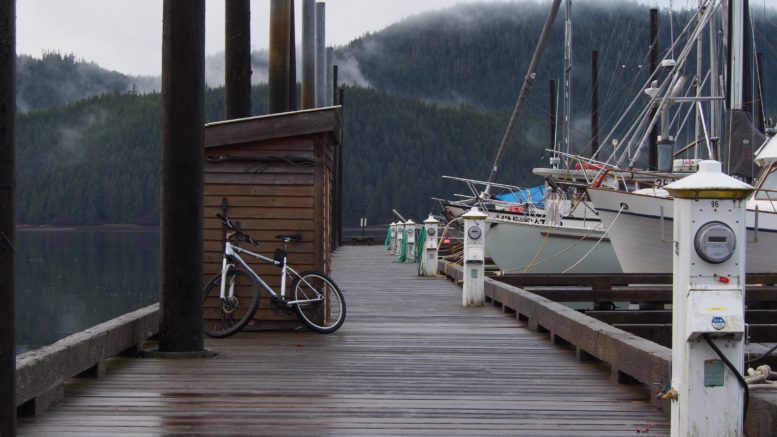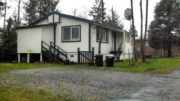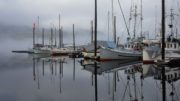Thorne Bay, Alaska – The smell of the ocean filled my senses as I walked the wet planks of the Thorne Bay dock years ago. Seagulls squawked in the distance and perched high above me on the pilings. Eagles soared above, searching for their next meal. A large stainless steel table under a covered area behind me waited for the next fishermen to come and process their catch. The typical overcast skies of the temperate rainforest blanked Prince of Wales Island.
Some people live in Thorne Bay without a vehicle; the bike may belong to a resident staying on a nearby boat. The meters in front of each slip provide power and water to the vessels.
A few years ago, I wrote this about the Thorne Bay dock:
“The lively dock hosted fishing vessels, houseboats, local floatplanes, mail planes, tiny cruise ships, and fishermen in rubber pants processing the day’s catch. Float house residents docked their skiffs before climbing the ramp to their vehicles stored at the nearby parking lot. Sportsmen loaded coolers, waxed fish boxes, fancy rods, and gun cases into the courtesy four-wheeler cart at the top of the dock. Then, they descended to the water’s edge to board the departing aircraft. Residents stopped to bail out their neighbor’s skiffs to prevent the boats from sinking from the overflow of rainwater. The Forest Service housed seasonal workers in a floating apartment building anchored to a berth. Once a year, the veterinarian arrived in a sailboat converted into a vet clinic to provide a three-day animal care clinic. There was always something happening on the dock.”
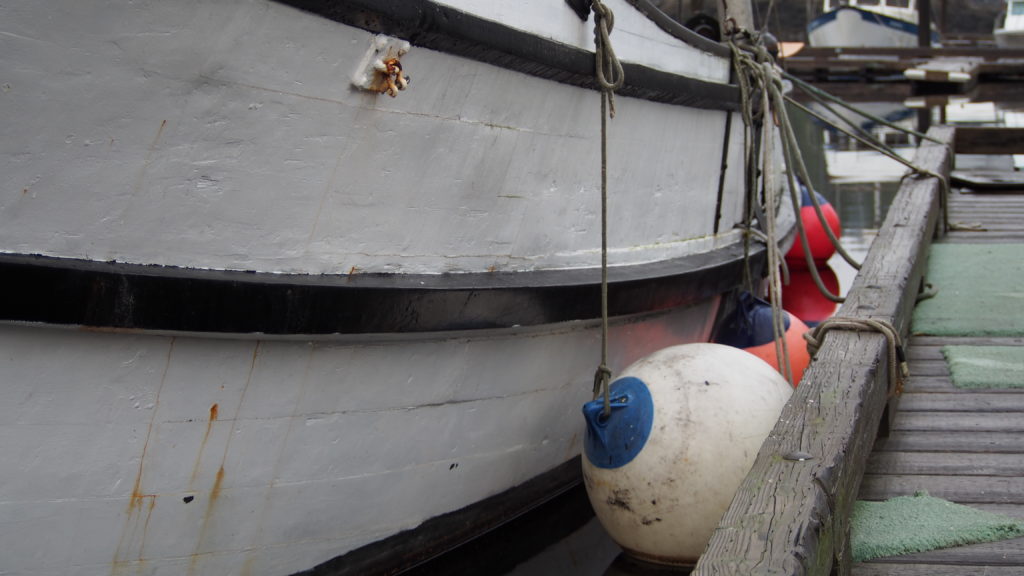
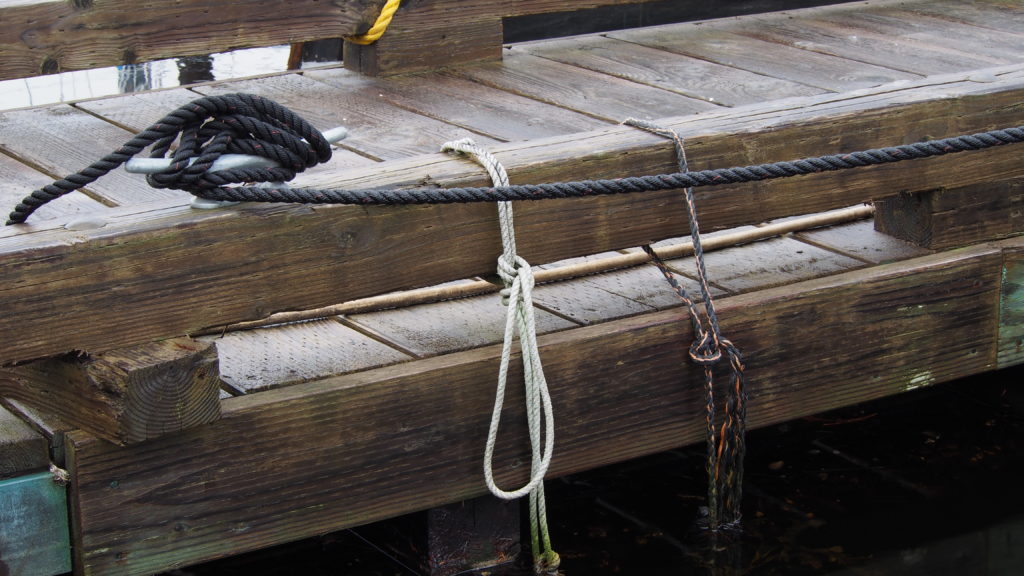
Now, for the rest of the Alaska story.
I live in Wyoming now and don’t even know where the closest dock would be. The seagulls no longer squawk over my head, nor can the sound of a buzzing seaplane be heard in the distance. The smell of sage has replaced the ocean. I knew these changes were coming, so I took advantage of the opportunity to enjoy my surroundings while I lived in Thorne Bay. My memoir, The Call of the Last Frontier, shared the story of my first night alone on the dock.
“That night, I discovered a new love. Insomnia ruled my life, so on restless nights, I threw caution to the wind, strolling by myself while the rest of the town slept. It would have displeased my mother and possibly Elgin, but it was my secret. Rare clear skies with a full moon drew me out. Blizzards drew me out. Pouring rain even coaxed me out of the house to gallivant on the dock and watch the boats rock in the waves. I slipped out to marvel at the bay in heavy fog or admired the moonlit planks covered in rain, frost, ice, or freshly fallen snow. The dock and beach are what I miss most from my Alaska days.”
Excerpts From: Melissa L. Cook. Amazon affiliate: The Call of the Last Frontier. Chapter 64 The Kamikaze Rave
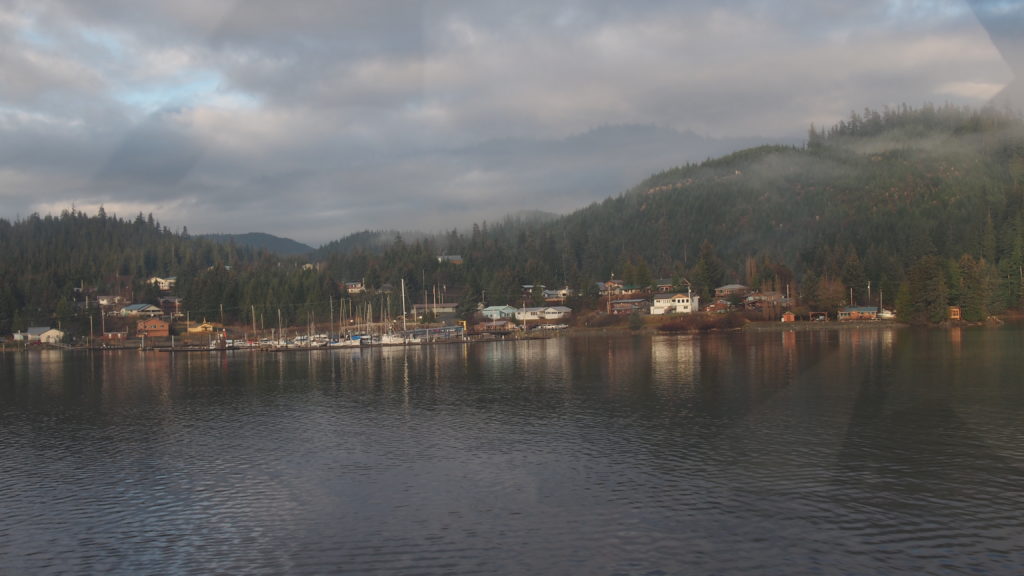
Other Posts on the Dock
A Way of Life in Remote Alaska—The Alaska Dock – The dock is the heart of some communities. Learn what happens on these docks in this post.
An Insider Peek at Thorne Bay, Alaska – This post looks closely at various aspects of the Thorne Bay dock.
